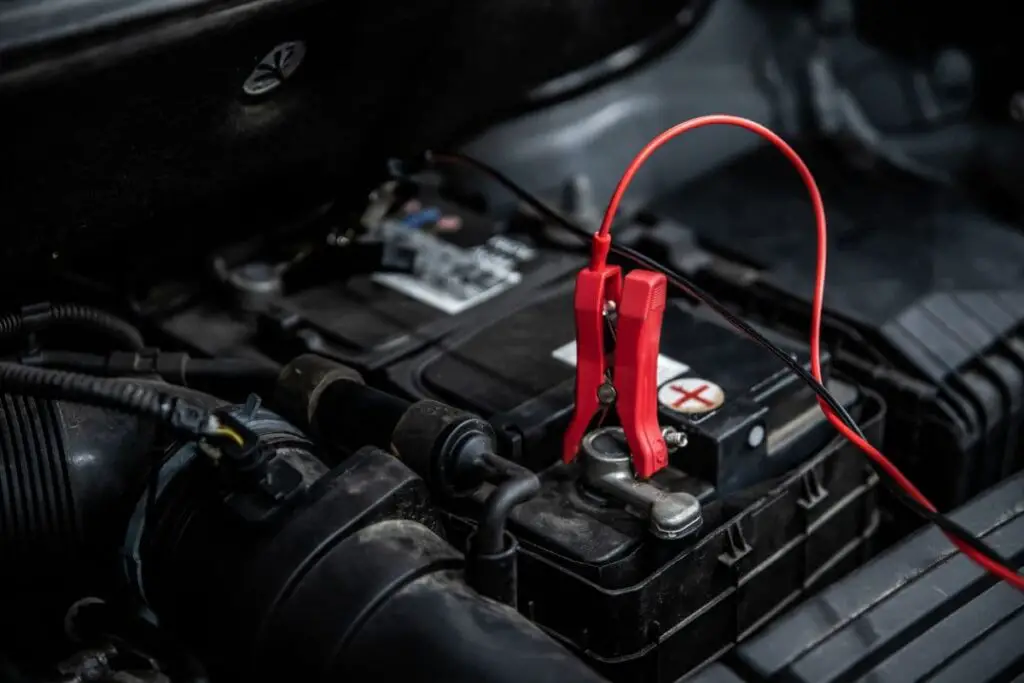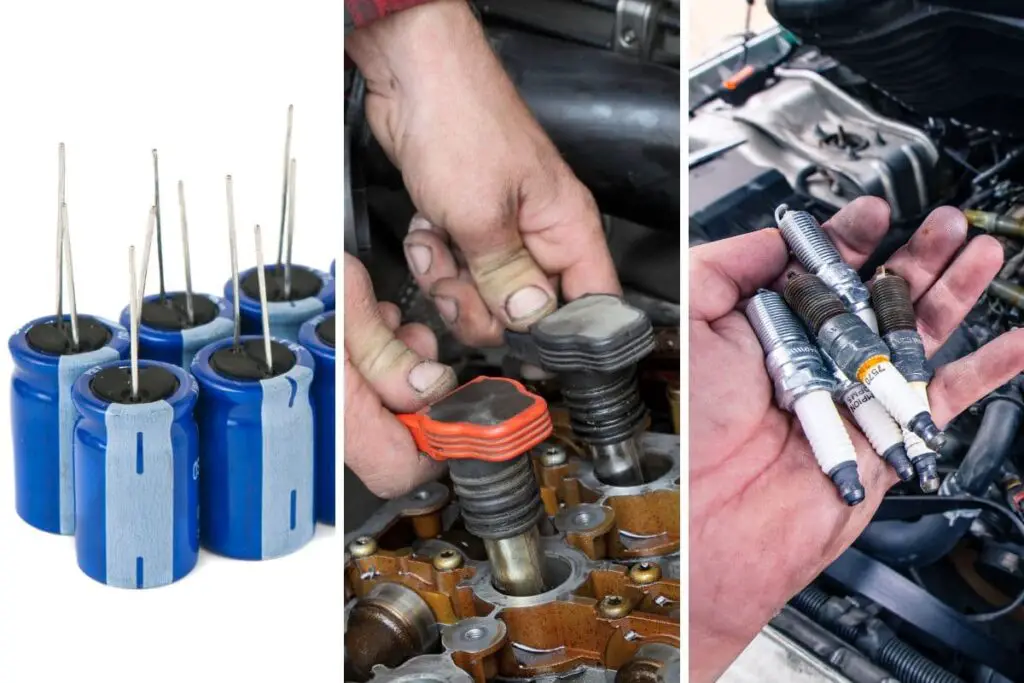As an Amazon Associate, we earn from qualifying purchases. We may also earn commissions if you purchase products from other retailers after clicking on a link from our site.
A car battery dying while parked or driving is an annoying problem, even in pleasant weather. Rain will likely exacerbate the problem and complicate your solutions, and you may wonder if you can change a car battery in the rain.
You can change a car battery in the rain, provided you handle the new one cautiously and prevent direct contact between its terminals (especially with a metal tool). Light rain shouldn’t be an issue, but you’ll want to use a tarp covering or find refuge if it’s pouring.
While you can change a car battery in the rain, you should take some precautions to avoid an electrical shock or short-circuiting the battery. Read on to learn how to safely change a car battery (even in bad weather).

How to Safely Change a Car Battery in the Rain
It’s safe to change car batteries while it’s raining if you follow certain safety measures. Let’s explore what these are and why they’re important.
Remove the Dead Battery Safely
Let’s say you need to replace a dead car battery with a fully-charged one.
The dead battery isn’t a threat as long as you disconnect the negative terminal first and then the positive. If the car battery you’re replacing has any charge left or you are unsure about its condition, exercise the same caution that you would with a new or fully-charged one.
Check for Signs of Leaking Acid
Rainwater might make it difficult to see minor acid spills in your car battery. If it’s raining hard, you should at least shield the engine with a tarp. If possible, move your car to a covered location so you can see clearly.
If the car battery is flooded with lead acid, check for any evident signs of spillage. Leaking acid when handling a car battery is a safety risk because lead acid can cause chemical burns on your skin.
Thus, avoid using bare hands if you have a leaking car battery or any signs of spillage.
Note: Leakage or spillage isn’t a concern for sealed or valve-regulated lead-acid car batteries.
Dry Your Hands and Remove Metal Accessories Before Changing Batteries
The resting voltage of a new or fully-charged car battery is 12 V, but the voltage ranges from 12.6 V to 14.4 V while driving. However, an old or dead battery is unlikely to have a resting voltage at 12 V, as a lack of charge will reduce it.
Theoretically, a 12 V DC car battery won’t push electrons through a human body. Bare skin has sufficient resistance to block the flow of electrons at low voltages of car batteries, but sweaty and wet hands can make you vulnerable to minor shocks.
Rainwater and sweat have free ions and many minerals and salts that reduce bare skin’s natural resistance. Likewise, blood, an open wound, and metal accessories are more conductive than bare skin. When there is higher conductivity, there is a greater chance of electrical shock.
Although the voltage is low, the amps are still at play. Therefore, you should dry your hands, bandage any wounds on your hands and arms, and remove metal accessories before changing a car battery.
Avoid Shorting a Charged or New Car Battery
Rain also increases the chances of accidents when fixing car issues, including short-circuiting the battery. With improper handling, metal objects or tools can accidentally short a charged battery, which can cause bodily harm and damage the battery.

Don’t let any conductor, especially metal, directly contact and connect the negative and positive terminals of charged or new car batteries. The amps flow can give you a burn or electric shock
Humans can feel different currents depending on how strong they are. Let’s look at the sensations caused by different voltages:
- <1 mA (milliAmp) of DC current isn’t sensed by humans because our tingling threshold is usually 1 mA for DC (and less than that for AC).
- 5 mA will cause a minor shock.
- >5 mA will likely be painful.
- >10 mA can stop someone’s heart.
DC current can stop your heart and cause your hand to stick to the battery.
While AC can cause atrial fibrillation, depending on the voltage, DC can be more deadly because your hand is stuck to the source. But you should still avoid any kind of accidental discharge or shorting a charged or new car battery due to its cranking amps.
As an example, car batteries like the Optima 8020-164 35 RedTop have 720 CCA (cold cranking amps). This 12 V battery can discharge as many as 720 amps for up to 30 seconds at temperatures as low as 0 °F (-18 °C). That’s an enormous quantity of electric current.
Another example: the likes of the XS Power D3400 AGM car battery has up to 1,000 CA (cranking amps). This 12 V battery can deliver a maximum of 1,000 amps for 30 seconds at temperatures as low as 32 °F (0 °C).
In rainy circumstances, such accidental discharges due to a short circuit can be painful or even dangerous.
Don’t Touch Other Cables or Wires in the Rain
After changing the car battery, be careful not to touch any other wires or posts. You don’t know if any cable or wire has cracked insulation, which can shock you if you’re not careful.
You should also stay away from the ignition components, including:
- Capacitor
- Coil wire
- Spark plug

Wait until wires, cables, and ignition components are dry because rainwater and splashes may cause some electrical discharge. While this slight discharge shouldn’t cause a shock, it’s safer to exercise caution.
Conclusion
You can safely change a car battery in the rain with the right precautions. Before beginning, dry your hands and take off any metal accessories. Check for signs of leakage, and avoid short-circuiting a charged battery and touching other cables or wires until they dry.
